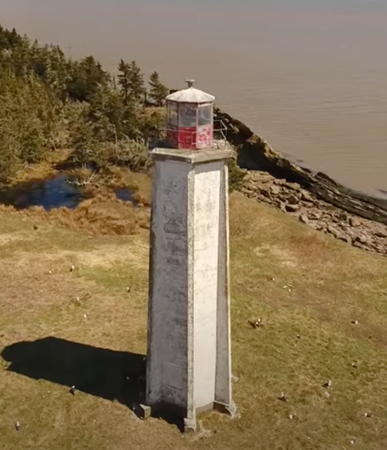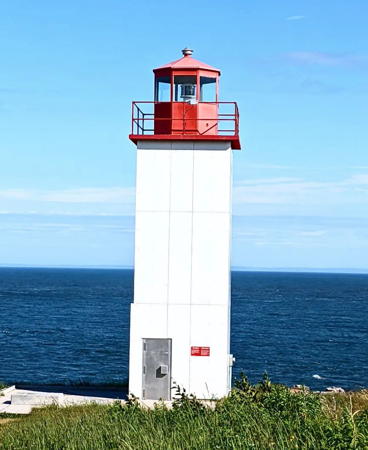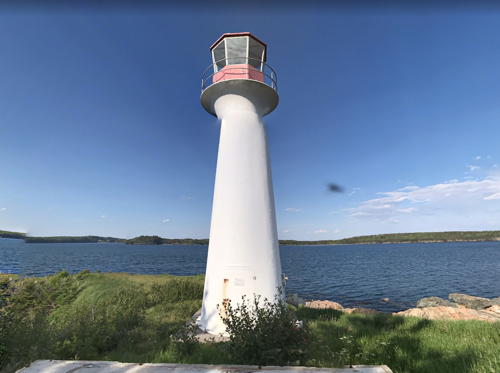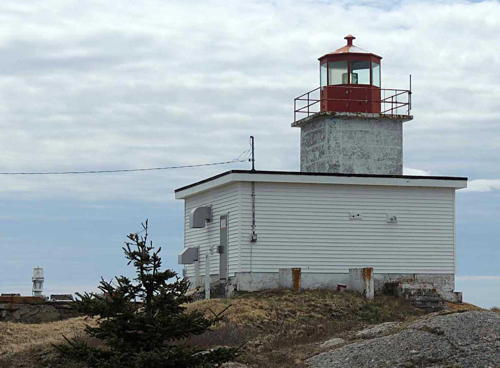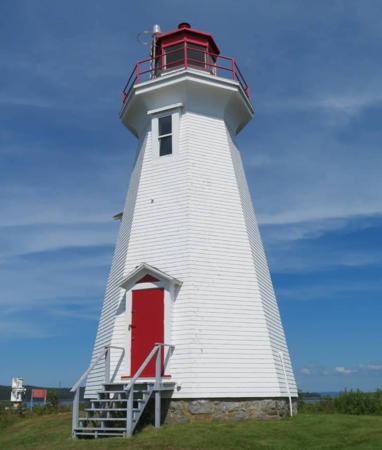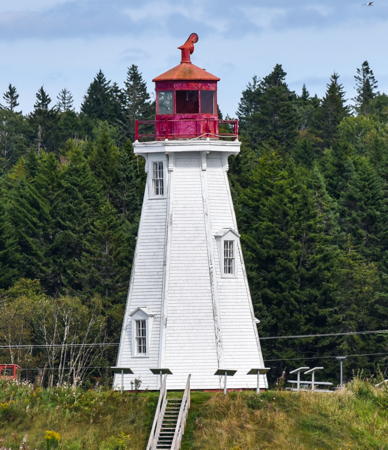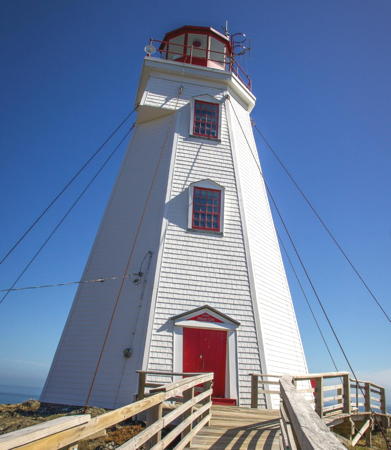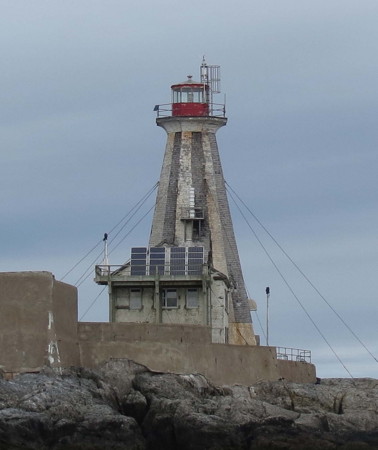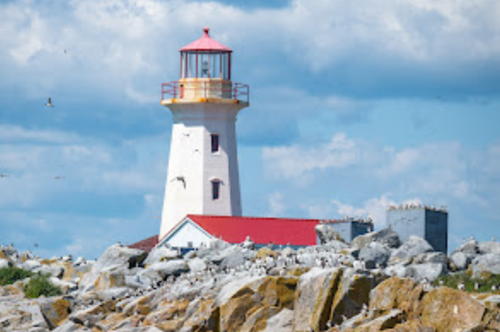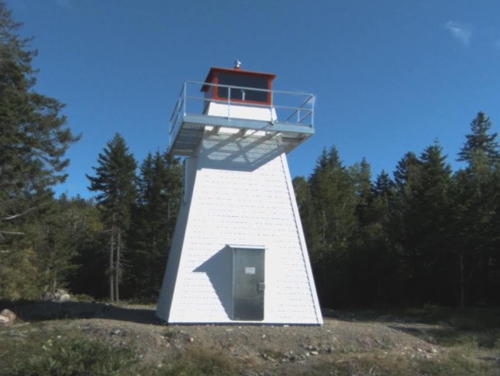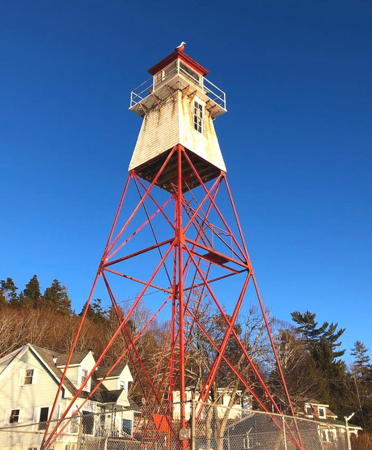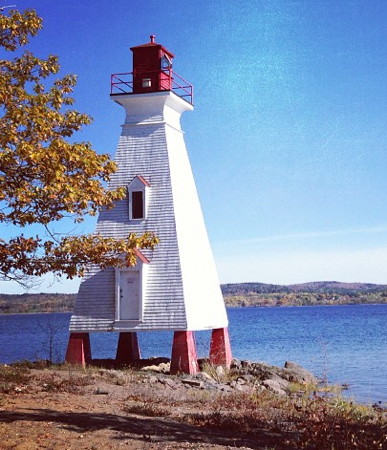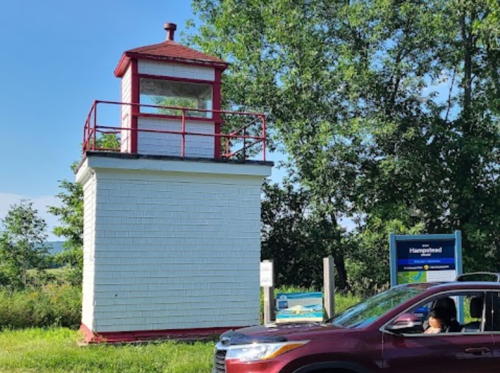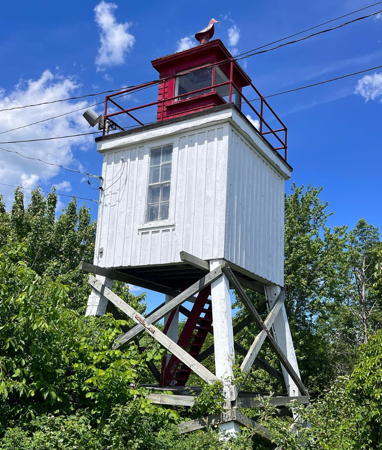The nation of Canada was created by the British North America Act in 1867 with New Brunswick as one of the four original provinces. The area had been part of New France, the French empire in North America, which fell to Britain during the Seven Years War (1756-63). After the war New Brunswick was part of Nova Scotia until separated from that colony in 1784.
The province of New Brunswick has two coastlines. The northern coast faces northeast on the Gulf of St. Lawrence and Northumberland Strait , while the southern coast faces southeast on the Bay of Fundy. The two coasts are separated by a narrow isthmus that joins New Brunswick to Nova Scotia. In addition to its coastal lighthouses the province has lighthouses along the long estuary of the Saint John River, which empties into the Bay of Fundy. This page lists lighthouses of the southern coast and Saint John River; the northern coast is covered on a separate page.
New Brunswick once had well over 100 lighthouses but modern deactivations have left it with fewer than 50 working towers. A number of the decommissioned lights survive, some of them relocated to new homes. One, the Woody Point Light, was relocated to Nova Scotia. Sadly, the province's lighthouse preservation society has disbanded. Local preservation efforts are strong in many communities but there are a number of lighthouses much in need of restoration.
New Brunswick is divided into 15 counties. Although county goverments were abolished in 1966 the counties continue to define regional communities. Outside of the municipalities a large number of local service districts provide public services.
New Brunswick is officially bilingual and about one third of its residents are French speakers. French is spoken commonly in the north of the province and English is more common in the south.
Aids to navigation in Canada are maintained by the Canadian Coast Guard. In 2008 Parliament passed the Heritage Lighthouse Protection Act to designate and protect historic lighthouses.
ARLHS numbers are from the ARLHS World List of Lights. CCG numbers are from the Atlantic Coast volume of the List of Lights, Buoys, and Fog Signals of Fisheries and Oceans Canada. Admiralty numbers are from Volume H of the Admiralty List of Lights & Fog Signals. U.S. NGA numbers are from Publication 110.
- General Sources
- New Brunswick Canada Lighthouses
- Excellent photos with historical and visitor information, from Kraig Anderson's LighthouseFriends.com web site.
- Neal's Lighthouse Blog: New Brunswick
- Photos and accounts of visits by Neal Doan.
- New Brunswick, Canada Lighthouses
- Aerial photos posted by Marinas.com.
- Lighthouses of the St. John River
- History and photos by Kelly Anne Loughery, published by Lighthouse Digest in January 2003.
- New Brunswick
- Nineteen 2008 photos by C.W. Bash.
- Lighthouses in New Brunswick
- Photos by various photographers available from Wikimedia.
- World of Lighthouses - Atlantic Coast of Canada
- Photos by various photographers available from Lightphotos.net.
- Online List of Lights - Canada
- Photos by various photographers posted by Alexander Trabas. Many of the photos from this area are by Michael Boucher or Capt. Peter Mosselberger ("Capt. Peter").
- Leuchttürme Kanadas auf historischen Postkarten
- Historic postcard views posted by Klaus Huelse.
- List of Lights, Buoys and Fog Signals
- Official Canadian light lists.
- GPSNauticalCharts
- Navigational chart for New Brunswick.
- Navionics Charts
- Navigational chart for New Brunswick.
- NOAA Nautical Chart Locator
- U.S. nautical charts for waters close to the U.S. border.
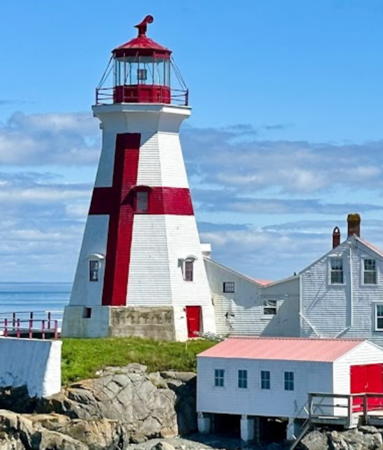
Head Harbour Light, Campobello Island, August 2023
Google Maps photo
by Michael David

PendleburyLight, St. Andrews, August 2021
Wikimedia Creative Commons photo by Gordon Leggett
